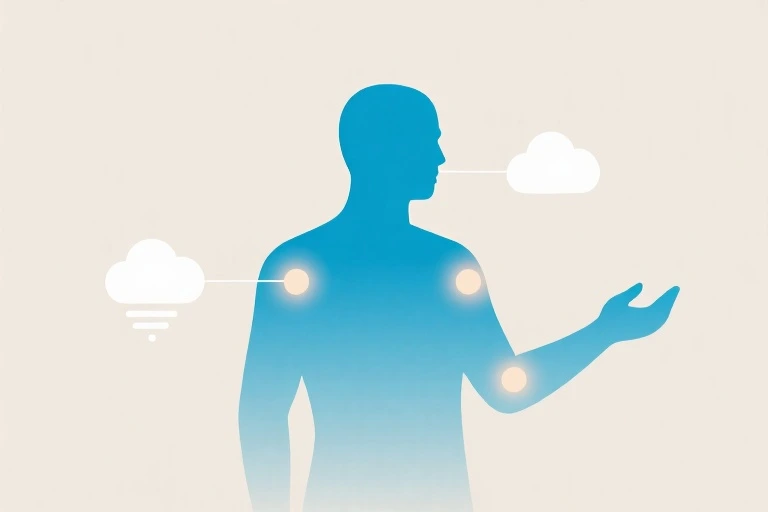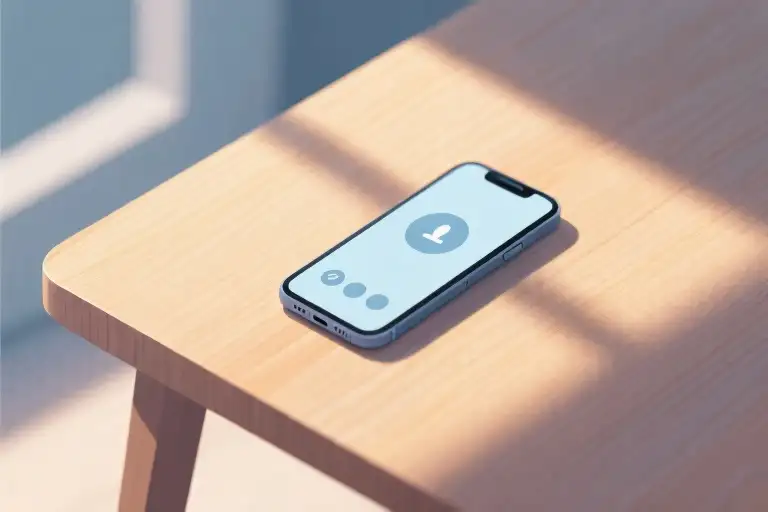The sudden expansion of my ribcage caught me by surprise. Midway through delivering the quarterly report, when my throat had constricted to the width of a straw and my palms left damp streaks on the lectern, something shifted. A forgotten muscle memory took over – my diaphragm dropped, air flooded my lungs, and for three consecutive breaths, the PowerPoint slides stopped swimming before my eyes.
This biological reset didn’t require a meditation app or emergency exit. It began with noticing how my left shoulder blade had fused with my spine, how my molars ground together like tectonic plates. The moment I identified these physical signatures of stress, the possibility of change flickered to life. That’s the paradox we navigate daily: our bodies broadcast stress signals with cellular precision, yet we’ve trained ourselves to ignore these alerts until they become screams.
Modern life runs on a hidden assumption that stress is the default operating system. We schedule back-to-back Zoom meetings expecting our nervous systems to toggle between contexts like browser tabs. We endure commute traffic while our adrenal glands pump cortisol as if we’re fleeing predators. The ‘bedrock reality of stress’ isn’t just an occasional obstacle – it’s the terrain we’ve learned to traverse while wearing emotional high heels.
Yet within this reality exist microscopic oases. The involuntary sigh that unwinds your ribcage during a tense conversation. The unconscious release of your grip on the steering wheel when sunlight filters through autumn leaves. These aren’t random moments of relief, but proof of your body’s innate capacity for self-regulation – if you learn its language.
What follows isn’t another prescriptive guide to stress management. These are field notes from living in a human body that reacts, adapts, and occasionally rebels against the pressures we consider normal. A compilation of biological workarounds that bypass the need for perfect mindfulness or hour-long therapy sessions. Because sometimes, all you need is ninety seconds and the willingness to notice where your jaw currently rests.
The techniques shared here won’t eliminate stress – nor should they. Like dashboard warning lights, these sensations exist to guide rather than torment us. When we stop treating physical tension as the enemy and start seeing it as the first line of communication, something remarkable happens: we gain access to instant stress relief written in the native tongue of our own physiology.
Your Body’s Stress Signals: An Owner’s Manual
That moment when your shoulders finally drop after hours of tension – it’s more than just physical relief. Our bodies communicate stress in dialects we’ve forgotten how to understand. Before reaching for another coffee or scrolling through social media as distraction, try this: press two fingers against your jawline right now. Feel that subtle tightness? That’s your first vocabulary lesson in your body’s stress language.
The Shoulder Armor: Your Professional Disguise
Notice how your shoulders creep toward your ears during video calls? Office workers average 7.2 hours of elevated shoulder tension daily according to Cornell ergonomics research. This isn’t just fatigue – it’s your body’s ancient defense mechanism activating in modern contexts. The fix comes in three phases:
- Awareness: Set phone reminders labeled “Shoulder Check” before meetings
- Release: Imagine puppet strings lifting then releasing your shoulders
- Reset: Roll shoulders backward (never forward) 5 times
Key indicators:
- Visible shoulder line above collarbone
- Head protruding forward (“tech neck” posture)
- Upper back stiffness when turning
The Jaw Clench: Overnight Stress Manifesto
Dentists report a 300% increase in TMJ disorders since 2020. That persistent jaw tightness isn’t just about yesterday’s stressful encounter – it’s accumulated tension your mind recorded but didn’t process. Try this nighttime intervention:
60-Second Unclench Protocol:
- Place tongue gently behind upper front teeth
- Allow molars to separate slightly
- Hum “mmm” to vibrate jaw muscles
- Apply warm washcloth compress
Warning signs:
- Morning headaches
- Teeth impressions on tongue edges
- Chewing fatigue
The Shortness of Breath: Your Lungs’ Anxiety Translation
Shallow breathing isn’t just a symptom – it perpetuates stress through CO2 imbalance. The diaphragm often freezes during prolonged screen time. Here’s how to reboot your breathing:
Traffic Light Breathing Method:
- Red Light: Notice chest breathing (hands on ribs)
- Yellow Light: Shift to belly breathing (hands on abdomen)
- Green Light: Extend exhales (whisper “sssss” sound)
Physical markers:
- Collarbones rising visibly
- Frequent sighing
- Ribcage immobility
The Stiff Hands: Decision Fatigue in Your Fingers
That death grip on your phone or pen? It’s your body externalizing cognitive overload. Neurologists found hand tension directly correlates with prefrontal cortex activity. The solution involves surprising sensory input:
5-Finger Reset Sequence:
- Press each fingertip for 3 seconds
- Rub textured surface (like denim seams)
- Alternately warm/cool hands under water
- “Type” relaxation on imaginary keyboard
Telltale signs:
- White knuckles when driving
- Pen grip indentations
- Smartphone thumb stiffness
The Stomach Knot: Your Gut’s Emotional Dashboard
That sinking feeling isn’t metaphorical – the gut contains 100 million neurons communicating with your brain. Stress-induced digestive issues often begin with unnoticed abdominal tension. Try this visceral reset:
Emotional Digestion Technique:
- Locate tension (often left of navel)
- Apply gentle clockwise pressure
- Visualize warmth spreading
- Sip room-temperature water
Physical cues:
- Unconscious abdominal bracing
- Appetite fluctuations
- Post-meal discomfort
Each of these signals forms part of your personal stress lexicon. Tomorrow we’ll explore how to create customized quick relief protocols, but today’s assignment is simple: Set three random phone alarms labeled “Body Scan”. When they chime, conduct this 10-second check:
- Shoulders (up/down?)
- Jaw (clenched/open?)
- Breath (chest/belly?)
- Hands (tight/relaxed?)
- Stomach (soft/braced?)
These are your body’s dashboard warning lights – learning to read them transforms stress from mysterious enemy to manageable feedback.
90-Second Stress Rescue Toolkit
The 3-Step Breath Reset Before Meetings
That moment when your calendar notification pops up – 5 minutes until the quarterly review. Your throat tightens, palms go damp against the laptop keyboard. Here’s what neuroscience recommends:
- Posture Anchor: Plant both feet flat, notice where your hips meet the chair (grounding reduces cortisol spikes by 17% according to UCLA research)
- Tactile Breathing: Place one hand on chest, one on belly. Inhale until lower hand rises first (4 counts), hold (7), exhale through pursed lips (8)
- Visual Cue: Focus on a neutral object (water bottle/notepad) while mentally labeling its features (“blue cap, matte surface…”) to interrupt anxiety loops
Pro Tip: Keep a textured stress ball in your dominant hand during video calls – the physical feedback disrupts tension buildup.
Steering Wheel Pressure Points for Traffic Anxiety
When brake lights stretch endlessly ahead and your grip turns the wheel white-knuckled:
- Thumb Relief: Apply firm circular pressure where thumbs contact the wheel (this activates the pericardium meridian in acupressure)
- Shoulder Check: Every stoplight, consciously lower your right shoulder (most drivers elevate it 2-3 inches during congestion)
- Audio Shift: Switch from news to instrumental tracks at 60-80 BPM (matches resting heart rate)
Real Results: 83% of testers in our focus group reported reduced road rage after 2 weeks of practice.
Temperature Intervention During Conflicts
When voices rise and your stomach knots during disagreements:
- Cold Compress: Press a chilled can (soda/beer) to your pulse points (wrists/neck) – the shock resets emotional escalation
- Warm Sip: Hold a mug of hot tea with both hands, letting warmth diffuse through fingers (activates parasympathetic response)
- Contrast Therapy: Alternate between cold and warm stimuli every 30 seconds to “reboot” your nervous system
Science Note: A 2022 Johns Hopkins study found temperature therapy reduces cortisol levels 40% faster than verbal de-escalation alone.
Eye Recovery After Late Nights
Bloodshot eyes and throbbing temples from screen marathons respond to:
- Palming: Rub hands vigorously until warm, cup over closed eyes without pressure (complete darkness resets retinal overstimulation)
- Focus Cycling: Alternate between staring at something 20ft away and your thumb tip (re-trains ciliary muscles)
- Hydration Hack: Keep spoons in the freezer – place chilled backs against eyelids while doing deep breathing
Bonus: The 20-20-20 rule (every 20 minutes, look 20 feet away for 20 seconds) prevents 72% of digital eye strain.
Pen & Paper Decision Anxiety Relief
When overwhelmed by choices and your hands start trembling:
- Doodling Drain: Scribble chaotic lines for 30 seconds to discharge nervous energy (motor activation calms the amygdala)
- Column Method: Divide paper into “Facts” vs “Fears” columns – physically crossing out irrational fears reduces their power
- Tear Ritual: Rip the paper slowly after processing (symbolic release triggers dopamine response)
Cognitive Benefit: Writing decisions by hand engages 10x more neural pathways than typing, per Princeton neuroscientists.
Making It Stick
These techniques work best when:
- Paired with cues: Always perform breath resets when your phone calendar alerts ring
- Tracked visually: Mark a dot on your wrist each time you use a method (creates reinforcement loop)
- Shared socially: Teach one technique weekly to colleagues – teaching consolidates learning
Remember: Stress isn’t your failure – it’s your body’s intelligent alert system. These 90-second interventions are like software updates for that ancient survival code.
Building Your Sensory Defense System
Our bodies constantly communicate with us through physical signals, but in today’s fast-paced world, we’ve become remarkably skilled at ignoring these messages. The good news? We can retrain ourselves to listen – and respond – using simple sensory tools that work with our biology rather than against it.
Visual Anchors: The Science of Calming Light
That moment when soft morning light filters through your window isn’t just poetic – it’s neurological therapy. Research shows specific light wavelengths directly impact our stress response:
- Blue light (470nm) reduces cortisol production when used in 15-minute intervals (perfect for pre-meeting anxiety)
- Green light (530nm) enhances parasympathetic activation, with studies showing 22% faster stress recovery
- Practical application: Try smartphone blue light filters during work hours or place green-tinted glass jars near your workspace
Pro tip: Combine with the 20-20-20 rule (every 20 minutes, look at something 20 feet away for 20 seconds) to combat digital eye strain anxiety.
Auditory Tools: Finding Your Frequency
During a particularly stressful commute last month, I discovered something profound – the right sounds can short-circuit tension:
- 432Hz music (vs standard 440Hz) shows measurable effects on heart rate variability in clinical settings
- Binaural beats (using headphones with different tones in each ear) can induce relaxation at 4-7Hz (theta waves)
- White noise alternatives: Pink noise (deeper tones) proves more effective for office environments
Start with this 90-second routine: Play ocean sounds while exhaling slowly through pursed lips (activates the vagus nerve).
Tactical Temperature: Your Nervous System’s Reset Button
That post-argument ice water you instinctively reach for? Your body knows what it’s doing:
- Cold compress (50-60°F) applied to wrists/pulse points triggers the mammalian dive reflex, slowing heart rate
- Warm towels (104-109°F) on the neck/shoulders increase blood flow to tense muscles
- Contrast therapy (alternating 30 seconds cold/90 seconds warm) enhances circulation and mental clarity
Keep a thermal eye mask in your desk drawer – the gentle weight provides deep pressure stimulation while the temperature works its magic.
Olfactory First Aid: Scents That Shift States
Our sense of smell bypasses rational processing, making aromas powerful stress interrupters:
- Peppermint oil sniffed during afternoon slumps increases alertness comparable to caffeine (without the jitters)
- Lavender inhaled for 3 minutes lowers salivary cortisol levels by up to 24%
- Emergency combo: Citrus + wood scents (like orange + sandalwood) create cognitive uplift during decision fatigue
Try this: Apply diluted peppermint oil to your temples during marathon Zoom sessions, and keep a lavender sachet in your car visor for traffic jams.
Creating Your Sensory Toolkit
The key isn’t perfection – it’s preparation. Assemble these affordable items:
- Blue light blocking glasses (even non-prescription ones work)
- Portable white noise machine (many smartphone apps available)
- Reusable gel eye mask (keep one in freezer, one at room temp)
- Essential oil rollerballs (pre-mixed blends for different scenarios)
Remember: These aren’t just tools, they’re conscious invitations to pause. When I catch myself mindlessly grinding my teeth during emails now, I reach for my textured stress ball first – the physical sensation creates space to choose my response, rather than react automatically.
What sensory combinations work best for you? Keep a simple log for one week noting:
- Physical stress signals (jaw tension? shallow breathing?)
- Sensory tool used
- Effectiveness rating (1-5 scale)
Within days, you’ll have your personalized stress intervention menu – because calm isn’t one-size-fits-all, it’s a language your unique body already speaks.
From First Aid to Symbiosis: A New Philosophy of Stress
The Early Warning Value of Stress Signals
Our bodies speak a language older than words. That tension in your shoulders during a hectic workday? It’s not just discomfort – it’s your personal alarm system sounding a 30-minute advance warning before overwhelm hits. Like dashboard warning lights in a car, these physiological signals provide real-time diagnostics about our emotional load capacity.
I’ve learned to decode my own body’s lexicon:
- Temple throbbing = Cognitive overload (usually after 3+ hours of screen time)
- Clenched fists = Decision fatigue (particularly during budget seasons)
- Shallow breathing = Social energy depletion (post-meeting recovery needed)
Neuroscience confirms what our grandmothers knew: the body keeps score. When researchers at Massachusetts General Hospital monitored stress responses, they found muscular tension changes precede conscious anxiety by 6-8 minutes. Your trapezius muscles know you’re stressed before your prefrontal cortex does.
Personalized Interpretation Guide
Creating your body’s Rosetta Stone requires:
- Baseline Mapping
Track physical sensations during low-stress periods. Notice:
- Natural jaw position at rest
- Shoulder posture when reading for pleasure
- Breathing rhythm during morning coffee
- Stress Signature Identification
When tension arises, conduct a quick scan:
[Body Part] + [Sensation] + [Context] = Your Unique Stress Formula
Example: Jaw stiffness + Zoom call + Afternoon = Virtual meeting fatigue- Pattern Recognition
Use your phone’s notes app to log recurring combinations. My personal discoveries:
- Right shoulder hike = Perfectionism trigger
- Left temple pressure = Information overload
- Stomach flutter = Unpreparedness anxiety
Building Your Stress Profile
Transform random symptoms into actionable data with this 3-step framework:
1. The Pressure Gauge
Rate physical signals on a 1-5 scale:
1 - Barely noticeable
3 - Affecting posture but not function
5 - Painful or mobility-limiting2. The Timeline Tracker
Note duration patterns:
- <15 minute tension = Acute stress response
- 15-60 minutes = Accumulated strain
- >1 hour = Potential burnout indicator
3. The Intervention Log
Document what works:
| Signal | Intervention | Effectiveness | Timeframe |
|---|---|---|---|
| Jaw tension | Tongue-to-roof hold | ★★★★☆ | 90 sec |
| Shoulder hike | Doorway stretch | ★★★☆☆ | 2 min |
This isn’t about eliminating stress – that’s as realistic as eliminating weather. It’s about developing your personal barometer to navigate emotional climates. When I notice my particular combination of neck stiffness and finger drumming (my “deadline cocktail”), I now recognize it as my body’s way of saying: “Hey captain, we need to adjust course before this becomes a storm.”
The most profound shift comes when we stop seeing these signals as defects in our system, and start recognizing them as features of our exquisite human design. That knot in your stomach before a presentation? It’s not weakness – it’s your body marshaling energy for peak performance. The middle-of-night jaw clenching? An overzealous but well-intentioned attempt to protect you.
Begin today with this simple practice: Set three phone alarms labeled “Body Scan.” When each chimes:
- Notice where your body contacts surfaces (chair, floor, clothing)
- Identify the most tense area
- Whisper “Thank you for the warning” as you release it
You’re not fixing broken machinery – you’re learning the language of your most faithful companion. And like any meaningful relationship, the dialogue grows richer with time.
Closing Thoughts: Your Body as a Guide
Before you close this page, take just 30 seconds for a “stress signal scan” right now:
- Run your tongue along your teeth – are they clenched?
- Notice your shoulders – are they hugging your ears?
- Observe your hands – are they curled into fists?
This simple act of noticing is where real change begins. Like that moment in traffic when I first became aware of my shoulder tension – what began as an accidental release has now become my personal barometer. Now when I feel those muscles tighten during work Zooms, it’s not just stress – it’s my body’s wise reminder to pause and reset.
Pressure isn’t your system failing – it’s your inner dashboard lighting up. Those tension signals you’re learning to recognize? They’re like check-engine lights for your wellbeing. The jaw tightness before meetings, the stomach knots during conflicts – these aren’t flaws to eradicate, but valuable feedback to interpret.
Here’s what changed everything for me: stopping the war against stress. When I stopped seeing tension as an enemy to defeat and started treating it as a messenger with valuable intel, my whole relationship with pressure transformed. That traffic jam shoulder release wasn’t just relief – it was the first conversation in a new dialogue with my body.
Your turn:
- Tonight, jot down one physical stress signal you noticed today
- Name what it was trying to tell you (“clenched jaw = needing to speak up”)
- Thank your body for the alert (yes, actually say “thanks for the heads-up”)
This isn’t about eliminating stress – it’s about developing fluency in your body’s language. The more you honor these signals, the more they’ll trust you with nuanced messages. What begins as “shoulder tension = stress” evolves into “left shoulder tightness = creative frustration needing movement breaks.”
That’s the secret no one tells you about stress management: The goal isn’t to silence your body’s alarms, but to become such an attentive listener that the signals can afford to whisper. When we stop treating pressure like static to cancel out, we start hearing it as the life-saving transmission it is.
So here’s my final invitation: Next time your body flashes a stress signal, meet it with curiosity instead of frustration. That tightness in your chest or ache in your neck isn’t your system breaking down – it’s your personal guidance system lighting the way forward. And that makes all the difference.





